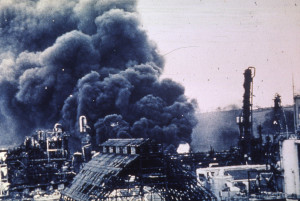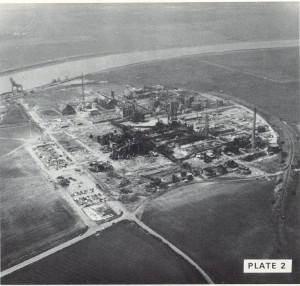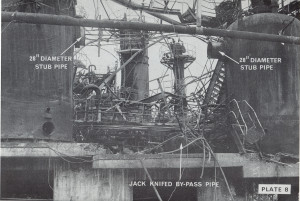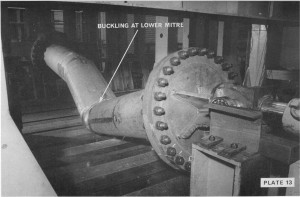A cyclohexane cloud violently exploded at a caprolactam plant; 28 employees were killed, and a total of 89 individuals were seriously hurt, 53 of them among the general public. Property loss was considerable: buildings destroyed within a 600-m radius, 1,820 dwellings and 167 businesses sustained damage.
Caprolactam was being synthesised by means of catalytic oxidation of cyclohexane at 155°C and under 8.8 bar of pressure inside 6 reactors placed in series; some 250 to 300 m³/hr of liquid was being conveyed by straight pipes 28” (711 mm) in diameter connected to the reactors via stainless steel expansion bellows.
A cyclohexane leak had been detected in March of the same year on Reactor No. 5, which revealed a slight vertical crack due to stress corrosion in the presence of nitrates. To avoid shutting down production, a bypass pipe with an elbow joint was planned to connect Reactors 4 and 6. The plant was undergoing a complete reorganisation. Lacking the requisite engineering capacities and managerial oversight, a 20″ diameter pipe was installed without any preliminary design, then the unit was restarted without appropriate initial controls or testing. Production resumed on April 1st and until May 29th, no problems had been reported. On Saturday, June 1st, the unit was shut down and then restarted several times, with small cyclohexane leaks apparently plugging themselves. The blast, which occurred at 4:53 pm and could be noticed as far away as 50 km, completely levelled the site and was followed by several fires producing flames rising 70 to 100 m into the air.
The investigation concluded the occurrence of a shear rupture of both attachment bellows on the temporary 20″ pipe, combined with a massive leak of 40 to 60 tonnes of hot pressurised cyclohexane. The cloud formed ignited at a distance of 100 m from the leak some 25 to 35 seconds later on the hydrogen unit’s reforming tower. These conclusions, delivered in April 1975, would not however meet with unanimous approval, and various theories regarding the causes of this accident would be aired in publications for decades.
The overall context of site operations contributed heavily to this disaster, with an understaffed management team (the Maintenance Manager’s post had gone unfilled for 6 months), a situation not in compliance with current regulations (i.e. an inventory of hazardous products 50 times higher than the authorised limit), and a business facing serious economic difficulties. This accident would lead to a major revision in both English and European regulations.
Download the detailed report in .pdf format (506 Kb)








